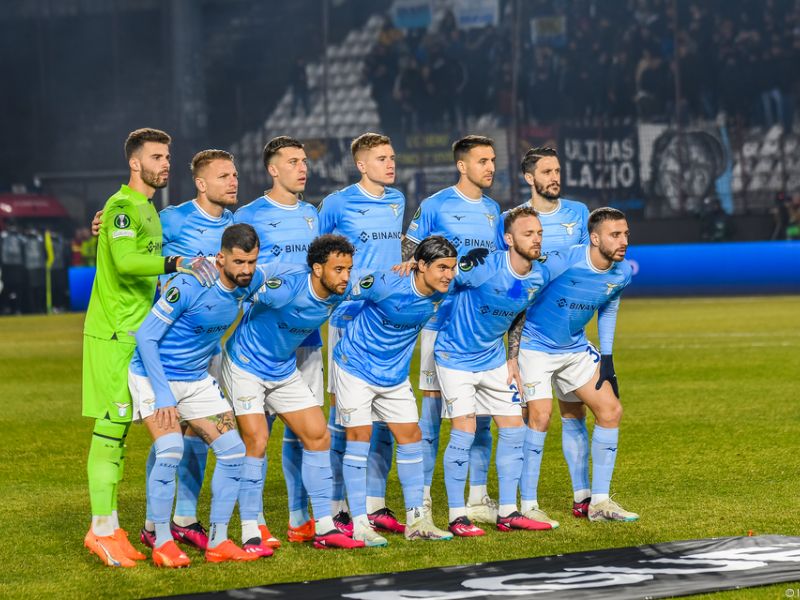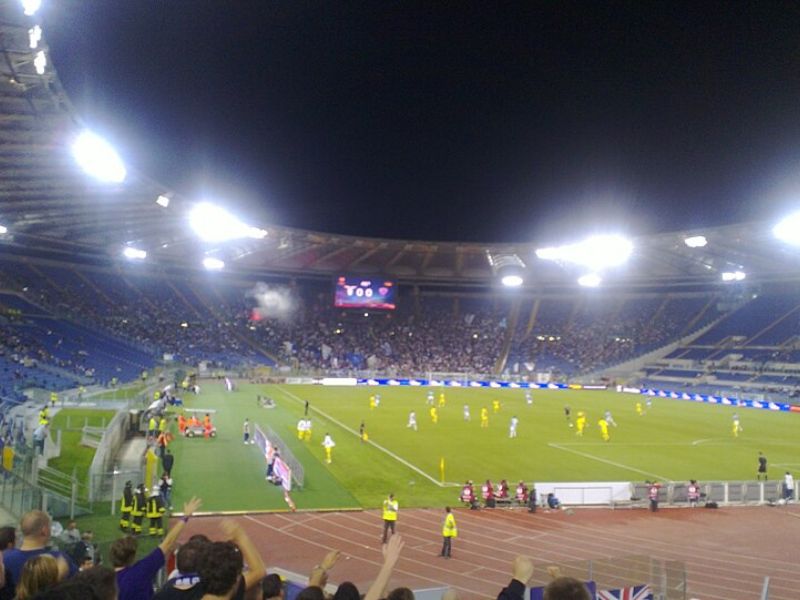The Eagle Rises in Rome
In a city where every stone tells a story and every hill hides an empire, SS Lazio soars above the skyline as one of Rome’s proudest institutions. Founded even before the unification of Italian football, Lazio isn’t just a team—it’s a legacy painted in sky blue and white, spread across generations of Romans and football romantics alike.
From Foot Races to Football: A Club is Born (1900)

The club was officially established on January 9, 1900, by a group of young Roman athletes in the district of Prati. Initially a general sports society, Società Sportiva Lazio began as a haven for athletics, rowing, swimming, and cycling. Football would come a few years later, but when it did, it took deep root.
Unlike many Italian clubs that formed through industrial or working-class circles, SS Lazio had an Olympic heartbeat from the start. It was one of the few clubs to survive the chaotic early days of Italian football, holding firm to its values and identity even when the national league took shape in the 1920s.
Colors of Greece, Heart of Rome
Those elegant sky-blue kits with white trim aren’t a random fashion statement. The colors were chosen as an homage to the ancient Olympic Games and the Greek flag—a nod to the ideals of sport and athleticism that the founders cherished. It’s also the reason why Lazio’s badge features the golden aquila, the Roman eagle of victory and imperial power.
In a city overflowing with imperial references, SS Lazio managed to blend classical symbolism with a modern football ethos, creating a visual identity unlike any other club in Italy.
Trophies and Golden Eras: Lazio’s Greatest Moments
Lazio’s trophy cabinet might not rival the Milanese giants, but its victories are layered in drama and significance. The club has won:
- 2 Serie A titles (1973–74, 1999–2000)
- 7 Coppa Italia titles
- 5 Supercoppa Italiana
- 1 UEFA Cup Winners’ Cup (1999)
- 1 UEFA Super Cup (1999)
The late 1990s were arguably Lazio’s golden age. Under coach Sven-Göran Eriksson and a squad packed with stars like Alessandro Nesta, Pavel Nedvěd, Juan Sebastián Verón, and Marcelo Salas, SS Lazio challenged and conquered both domestically and in Europe. The treble of 1999—the Cup Winners’ Cup, Supercoppa, and Coppa Italia—cemented their reputation as a serious force.
The Eternal Derby: SS Lazio vs Roma

In 1927, the Italian Fascist regime merged several Roman football clubs to form AS Roma—but SS Lazio refused to join. This decision ignited what is now one of football’s fiercest rivalries: the Derby della Capitale.
Unlike most derbies, this one isn’t about class or politics—it’s about territory, pride, and identity. When SS Lazio faces Roma, the Stadio Olimpico becomes a battlefield of color, banners, and choreography. Whether it’s Paolo Di Canio’s controversial celebrations or Lazio’s 26 May 2013 Coppa Italia final win over Roma, every derby adds a new chapter to a century-long saga.
Legends in Sky Blue: From Piola to Immobile
Lazio’s all-time greats stretch across the decades. The legendary Silvio Piola, top scorer in Serie A history, wore Lazio’s shirt with unmatched style in the 1930s and ’40s. More recently, Ciro Immobile has become Lazio’s talisman—breaking records, winning the European Golden Shoe in 2020, and carving his name into club history.
Other iconic names include Giuseppe Signori, Alessandro Nesta, Giorgio Chinaglia, and Tommaso Rocchi. Lazio’s heroes aren’t always the most famous in world football—but they’re eternal in Formello and beloved across Rome.
The Crest and the Aquila: Symbols of Power

Lazio’s club crest features a golden eagle poised in mid-flight—a nod to Roman legions and the military standard carried into battle. The eagle isn’t just symbolic; SS Lazio even had a live eagle mascot named Olimpia, who flies across the pitch before matches, a tradition that stirs the crowd like an imperial procession.
Few clubs blend classical iconography with modern branding so naturally. The aquila isn’t a gimmick—it’s DNA.
Formello, the Olimpico, and the Future
SS Lazio trains at the Formello Sports Center, a modern facility north of Rome. But every matchday, the club returns to its battlefield: the Stadio Olimpico, a venue it shares with its rivals, yet one it transforms with blue flags and soaring chants when it’s their home fixture.
Plans for Lazio to build their own stadium occasionally surface, but for now, the Olimpico remains their stage, echoing with past glories and future ambitions.
Why SS Lazio Still Soars in the 21st Century
Lazio isn’t just a football club—it’s a narrative. A club of athletes and rebels, of elegance and defiance. From resisting fascist consolidation in the ’20s to building a modern team around a homegrown soul like Immobile, SS Lazio has always chosen its own path.
In a city where emperors once ruled, SS Lazio keeps the eagle in flight—not just through goals and titles, but through tradition, loyalty, and a passionate community that doesn’t follow trends but builds legacies.
